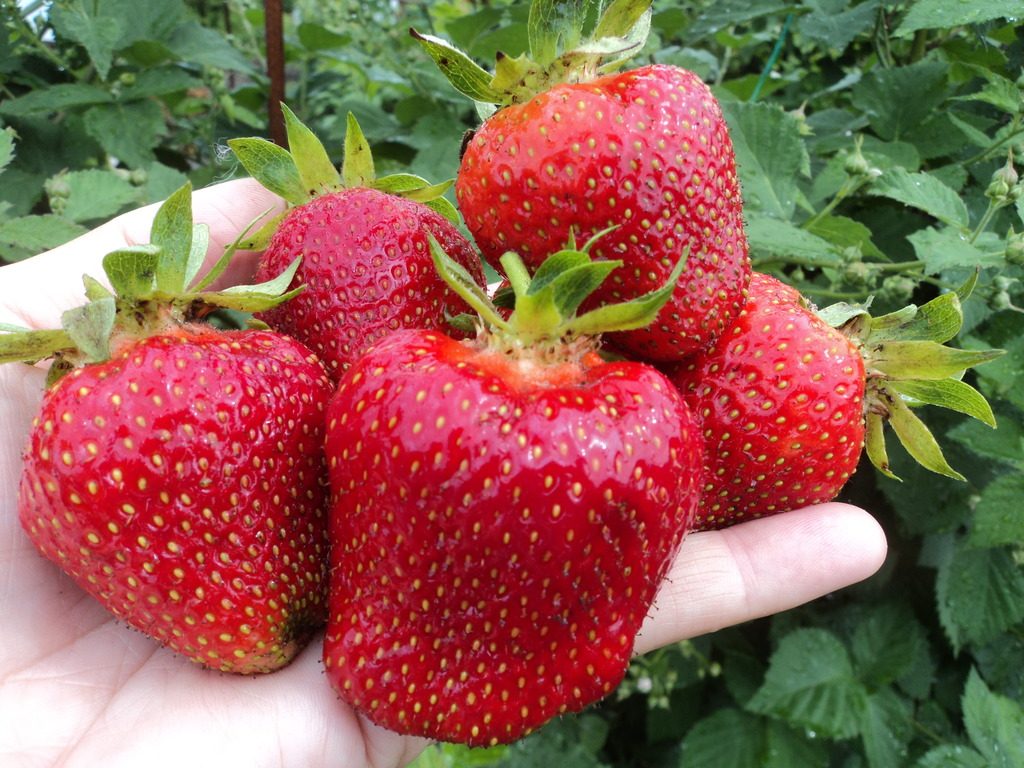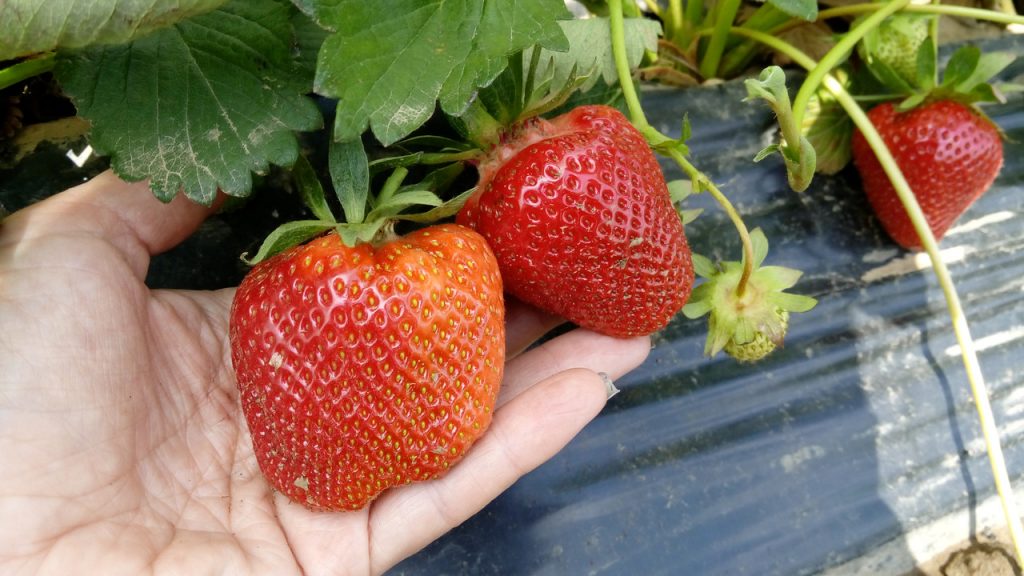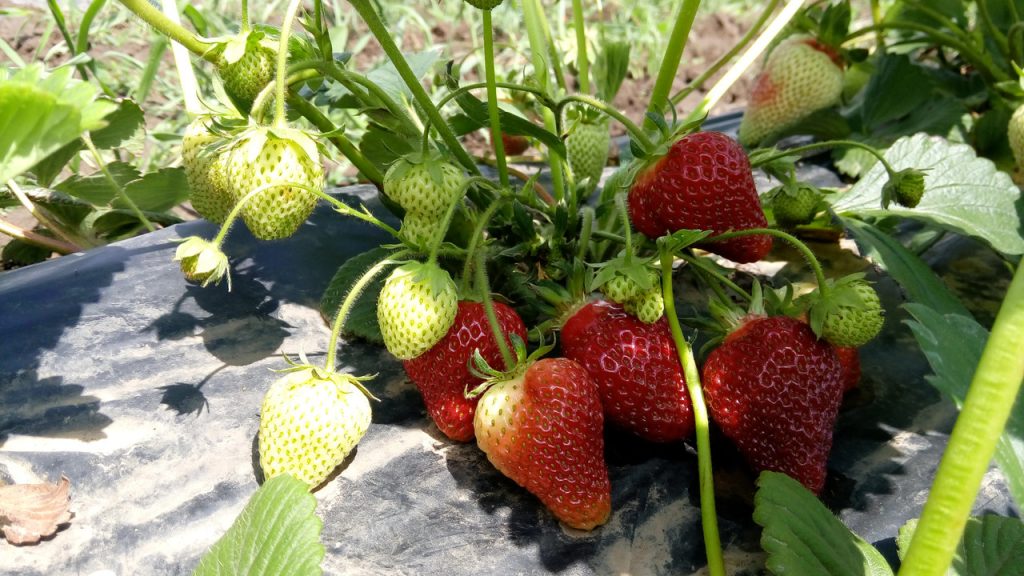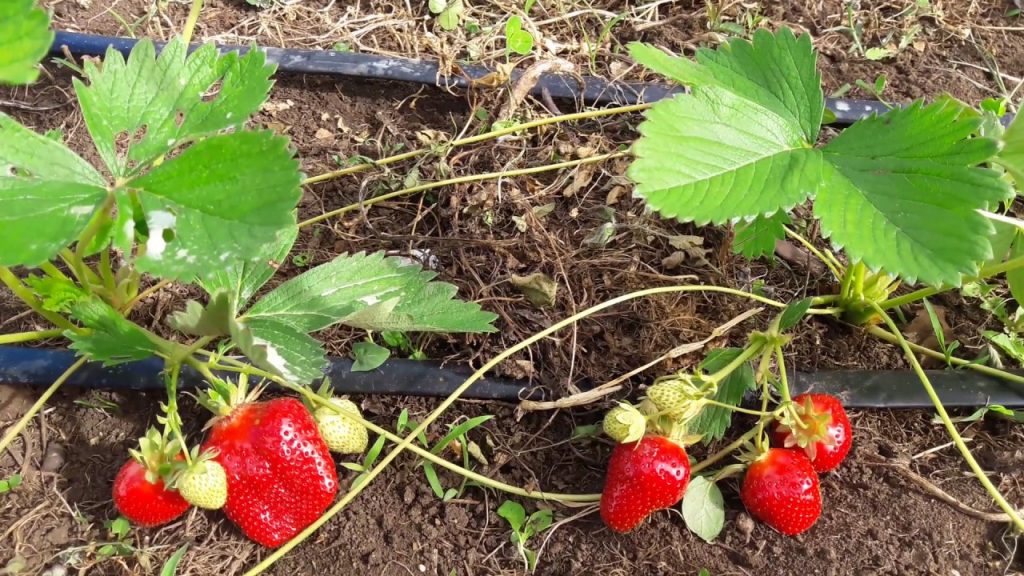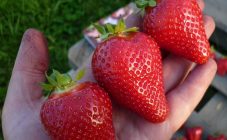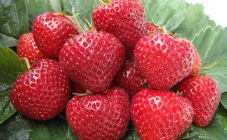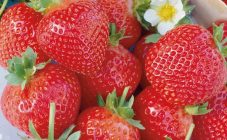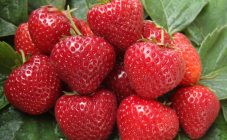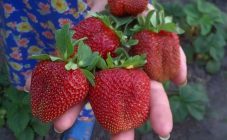Content:
Garden berries in general and Jolie strawberries, in particular, are considered the most attractive garden fruits, which both children and adults love to eat. It is not for nothing that many gardeners strive to try out the newly emerging breeding varieties, trying to add another type of berry to their piggy bank, called garden strawberry. A similar situation has developed with Jolie strawberries, a description of the variety of which will be presented in the next section.
Prehistory of the variety
The crop in question came to Russia from southern Europe, where it was bred in 2004 by a group of Italian breeders based on genetically similar species of strawberry plants (Clery and Darselect). Has not yet passed the full test cycle and is not registered in the State. country register a completely new type of berries has become widespread in the Russian open spaces.
Starting from 2005 and over the next five years, its varietal tests were carried out on a variety of parameters. Over the past time, not only European strawberry lovers, but also a simple Russian gardener were forced to recognize its indisputable advantages in comparison with other crops.
All of them can only wait for this variety of strawberry berries to pass the final registration and thus receive official recognition.
Description and characteristics
Starting to describe the variety, we note that its full characteristic can be presented in the form of the following properties:
- This species belongs to medium early strawberry plants and is resistant to heat and severe drought.
- According to the size of the bush, it should be attributed to not very tall crops, the leafy cuttings and peduncles of which are of medium size.
- Its leaves are not very large with a weakly expressed wrinkling, which does not allow the strawberry bushes to thicken excessively.
- With properly organized vegetation and suitable climatic conditions, up to 1 kg of ripe berries can be removed from one nest per season.
Bred on the basis of two known crops, the mid-early varietal hybrid Jolie differs somewhat from them in terms of ripening. So, its fruits are ready for harvest 4-5 days later than it happens with Clery berries, which it surpasses in yield by about 10-15%. With his progenitor Darselect, he matures almost simultaneously.
The following can be noted regarding the fruits of this variety:
- They have the correct shape (it is also called typical or canonical) and are characterized by an increased density of the pulp and the strength of the protective shell.
- The uniformity of the fruit is disturbed closer to the end of the season, when the berry begins to become smaller.
- In appearance, it is quite attractive at all stages of its ripening and can decorate the garden as a decorative element.
- The color of the berries is intensely red with a pronounced shine.
- Their average weight is about 30-40 grams.
- The taste of Jolie fruits is characterized as sweet with a slight acidity and a weak strawberry aroma.
- Their cut is fairly even, without any flaws or voids.
Due to its strong skin and dense pulp, Jolie strawberries tolerate long-term storage without losing flavor and are easily transported over long distances. This combination of qualities allows the mass cultivation of berries, that is, their cultivation for commercial purposes.
They are also very popular among representatives of the culinary arts. In the process of heat treatment, the collected fruits perfectly retain their shape and are ready for further use for their intended purpose.
Agrotechnics of culture
Reproduction
In the first year of the growing season, subject to the rules of agricultural technology, strawberries provide quality planting material in the form of tendrils, which are thrown out by each bush in an amount of 2 to 5 pieces. Selected seedlings for subsequent breeding are taken only from the first two outlets (the rest, as a rule, are removed).
By about August a month, young sockets are fully formed until they are ready to be transplanted to a separate place intended for them. When conducting it, it is advisable to adhere to the following rules:
- The planting density should not exceed 5 bushes per unit area.
- For planting seedlings with an earthen lump, the summer season is chosen, and cuttings with open roots are usually planted closer to September.
- In the second case, it is undesirable to delay the transfer into the ground over time.
During the breeding process, it is important to maintain the soil in a condition suitable for the young seedling to take root well. For this, both organic and mineral fertilizers are introduced into it in advance (about 3-4 months before planting). At the same time, at least 2 buckets of humus are usually relied on per square of area, on top of which up to 1.5 kg of furnace ash is poured.
After applying top dressing, it is imperative to dig up the bed, and then bore through it, which will ensure the unhindered flow of oxygen to the roots of the plant.
Care
Regular care of Jolie strawberries, first of all, comes down to timely watering of the bushes, which is organized no more than once a week. The need for the next moistening of the soil should be determined by the state of its upper layer and proceed to this procedure only when it is strongly drained.
In addition, one should not forget about such mandatory measures as plant pruning and sanitization of the planting site. Even in the spring, you should worry about removing all excess foliage from the planted outlets and thoroughly clearing the planting zone from weeds. Only after that it will be possible to proceed to feeding the growing strawberries, which is carried out in the following order:
- First, 2 large tablespoons of urea or ammonium nitrate are bred in a ten-liter bucket, and the resulting mixture is then poured under a young garden seedling.
- The next (second in a row) portion of fertilizers is recommended to be applied during the period of peduncle formation. This feeding is carried out according to the same scheme as the autumn one.
- Continue the fertilization procedure until the berries ripen.
With the appearance of the first fruits, feeding completely stops, since the picking of berries can last almost 4 weeks.
Advantages and disadvantages
The advantages of this variety include:
- The unique taste of the same type of strawberry, which belongs to the best examples of Italian selection.
- The ability to maintain its shape, which guarantees the possibility of its long-term transportation and storage in warehouse conditions.
- Good immunity to the development of fungal infections.
- Drought tolerance and unpretentiousness to cultivation conditions (to the composition of the soil, in particular).
- Enviable frost resistance, allowing to breed an Italian variety in the conditions of the Russian winter.
Its minor drawback can be considered the low position of the peduncles on the stem, which is why the berries often come into contact with the ground.
In conclusion, we note that the species imported from Italy took root well in new spaces and quickly adapted to the harsh Russian climate. Today, most gardeners are engaged in its cultivation, preferring the original Italian product to all other varieties of strawberry berries.
